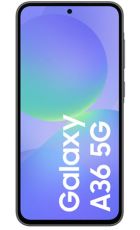Chances are you’re using 4G on a daily basis, probably even more than you’re using 3G or 5G. It’s a newer, better technology than 3G (though older and worse than 5G) and has been around for a long time now, but what exactly is it? What’s so good about it? And how do you get it?
We’ll answer all of that and more below in simple terms, so read on and become an instant expert in the mobile technology that we’re all using.
What is 4G?
4G simply stands for fourth generation, and it’s called that because it’s the fourth generation of mobile technology, following on from 2G and 3G.
4G is sometimes referred to as LTE (Long Term Evolution) and it’s similar in a lot of ways to 3G, as it allows you to use data to browse the net, play online games, download and stream, and more, but it does so a lot faster than 3G.
As such, it’s a big part of why our phones have become more like computers. As not only have their processors got faster, but their ability to do things online has too.
How fast is 4G?
Standard 4G, which is what all UK networks initially launched, offers average download speeds of around 14Mbps, which is roughly three times as fast as standard 3G (which averages around 3Mbps), and more than twice as fast as 3G HSPA+, which is a more advanced form of 3G, with average download speeds of around 6Mbps.
However, while averaging around 14Mbps, standard 4G is theoretically capable of far higher speeds, potentially topping out at around 150Mbps. In short then, 4G is a lot faster than 3G, meaning you can have a far smoother experience online.
As an example, you could download a 2GB file (such as a film or a big game) in 3 minutes and 20 seconds using standard 4G, while it would take close to half an hour when using 3G.
There’s a similarly big difference with upload speeds – using standard 4G you can expect typical speeds of around 8Mbps and theoretical top-end upload speeds of around 50Mbps, while standard 3G averages roughly 0.4Mbps and HSPA+ averages around 3Mbps.
And we’re only talking about standard 4G here – some networks now offer improved versions of the technology with even higher speeds. We’ll look at them below.
What other advantages does 4G have?
The main other advantage you get from 4G compared to 3G is reduced latency. This is the measure of how long the network takes to respond to a request and it’s measured in milliseconds. It might therefore sound like a reduction wouldn’t make much difference, but for some things it really can.
For example, if you’re playing a fast-paced online game then a low latency can be vitally important as you need to respond instantly to what’s happening.
Latency using 3G stands at around 60-75ms, but according to the OpenSignal Mobile Networks Experience Report from April 2020, the UK’s 4G networks are averaging between 36ms (EE) and 48.3ms (Three). So it’s a substantial difference.
Another potential advantage of 4G is clearer voice calls, as 4G can carry more data. The caveat here is that not all networks allow you to call over 4G (usually referred to as either 4G Calling or VoLTE).
Is all 4G the same?
No. So far we’ve only really talked about ‘standard’ 4G, but some networks offer faster, better versions of it.
EE is a prime example of this, as for a long time now it has delivered ‘double speed’ 4G to much of the UK. This uses the same technology as 4G, but just allocates twice as much spectrum, offering real-world download speeds that top out at 60Mbps.
However, EE, Three and Vodafone have all gone even further than that in some areas, offering LTE Advanced (also known as LTE-A or 4G+). This in EE’s case delivers top real-world speeds of 90Mbps and a theoretical maximum of 300Mbps. Three’s and Vodafone’s speeds should be similar, though in tests from RootMetrics and the like they rarely quite match EE for 4G speeds.
To understand how LTE-A works you first have to know how normal 4G works. For normal 4G, data is sent using a single antenna on a mobile mast to a single antenna on your phone or tablet. But for LTE-A multiple antennas are used at each end, so much more data can be sent at once. This is known as MIMO (Multiple Input Multiple Output).
Can I get 4G?
Almost certainly. At last count, every UK network offered at least 99% 4G population coverage across the UK.
If you live somewhere rural you might want to use your network’s coverage checker to be sure, but the majority of people will now be able to get a 4G signal most of the time.
The only other piece of the puzzle is your device, which needs to support 4G, but the vast majority of modern phones do. In fact, Three doesn’t even sell 3G-only mobile devices anymore.
What about 5G?
While this article is focused on 4G, it would be remiss of us not to note that 5G is now available in select regions on all four of the UK’s main networks as well as some MVNOs (mobile virtual network operators) such as Sky Mobile.
5G coverage at the time of writing is very limited on all networks, but where it is available (and assuming you have a 5G phone) it’s a big step up on even 4G. Speeds average around 150-200Mbps and potentially top out at well over 1Gbps, while latency has been found to average around 21-26ms. Both speeds and latency are likely to improve over time too.
4G will still likely be the norm for a while, but 5G is definitely the future, and as a result 3G is looking increasingly dated.





